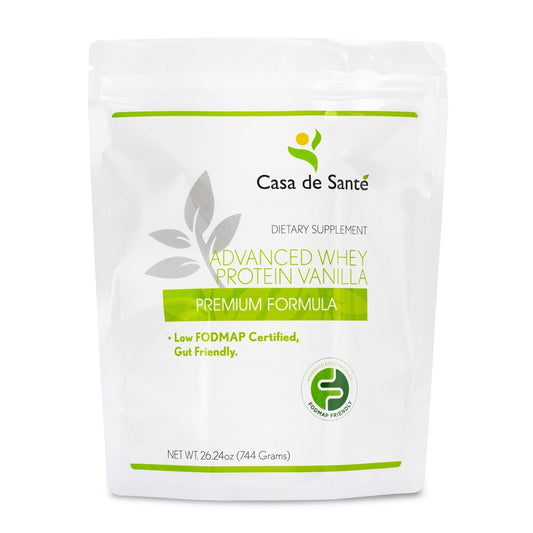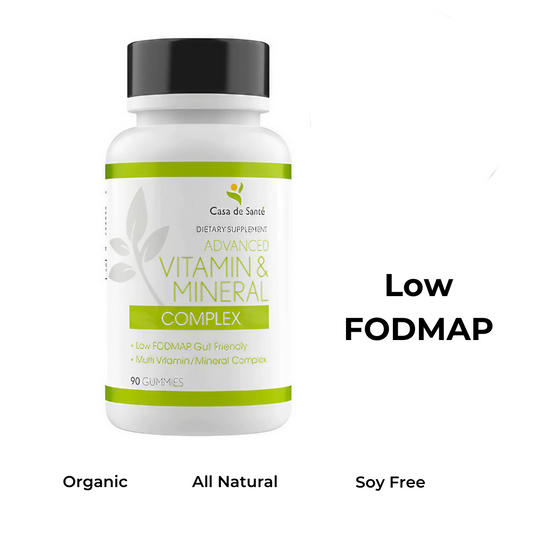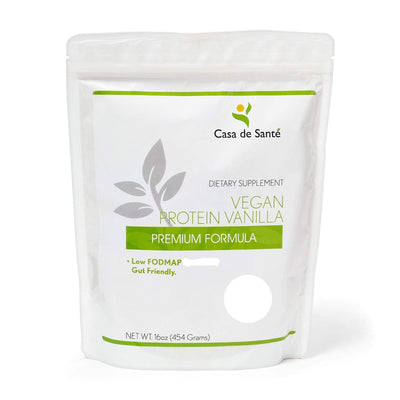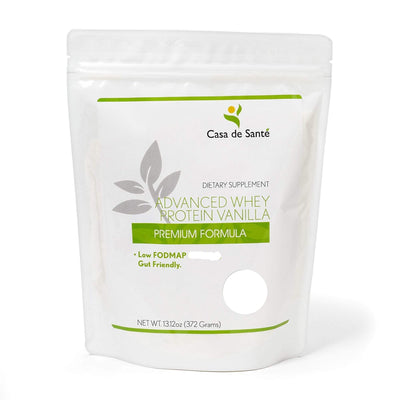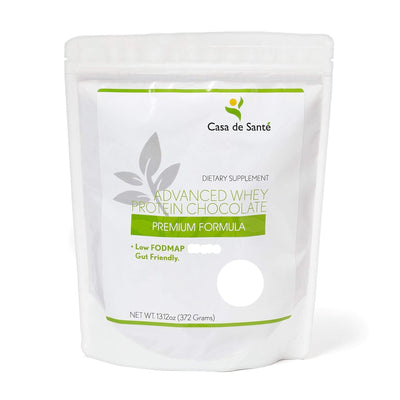Is Tbhq High In Histamine
Is Tbhq High In Histamine
Tbhq, or tertiary butylhydroquinone, is a food additive commonly used to prolong the shelf life of processed foods. Despite its widespread use, there are concerns regarding its potential impact on histamine levels in the body. In this article, we will delve into the relationship between tbhq and histamine, explore scientific research on the subject, debunk common myths, and provide practical ways to manage histamine levels effectively.
Understanding TBHQ: A Brief Overview
TBHQ, also known as tertiary butylhydroquinone, is a synthetic antioxidant that is added to various processed food products. Its primary function is to prevent spoilage and rancidity by inhibiting the oxidation of fats and oils. It is widely used in products such as cereals, snacks, baked goods, and cooking oils.
What is TBHQ?
TBHQ is a white, crystalline powder that is derived from petroleum. It is approved by regulatory authorities such as the U.S. Food and Drug Administration (FDA) as a safe food additive when used within the specified limits. The exact mechanism by which TBHQ functions as an antioxidant is complex and beyond the scope of this article.
However, it is worth noting that TBHQ works by donating hydrogen atoms to free radicals, thereby neutralizing them and preventing them from causing oxidative damage to fats and oils. This process helps to extend the shelf life of processed food products and maintain their quality.
Furthermore, TBHQ has a long history of use in the food industry and has been extensively studied for its safety. It has been found to have a low toxicity profile and is generally considered safe for consumption when used in accordance with regulatory guidelines.
Common Uses of TBHQ
Due to its antioxidant properties, TBHQ is commonly added to fat-containing food products to prevent oxidative degradation and prolong their shelf life. It helps maintain the quality and flavor of various processed foods, thereby enhancing their appeal to consumers.
For example, TBHQ is often used in the production of snack foods such as potato chips and crackers. By inhibiting the oxidation of the fats present in these products, TBHQ helps to prevent them from becoming rancid and developing off-flavors. This ensures that the snacks remain fresh and enjoyable for a longer period of time.
In addition to snack foods, TBHQ is also frequently used in cooking oils. When exposed to air and heat, oils can undergo oxidative reactions that lead to the formation of off-flavors and unpleasant odors. By incorporating TBHQ into cooking oils, manufacturers can extend their shelf life and maintain their quality, ensuring that consumers can enjoy delicious meals without the worry of rancidity.
Furthermore, TBHQ is commonly found in breakfast cereals and baked goods. These products often contain fats and oils that can undergo oxidation, leading to a decrease in quality and taste. By adding TBHQ, manufacturers can protect the fats and oils from oxidation, ensuring that the cereals and baked goods remain fresh and appealing to consumers.
It is important to note that while TBHQ is generally recognized as safe, some individuals may be sensitive to it and experience adverse reactions. These reactions can include nausea, vomiting, and allergic reactions. Therefore, it is always recommended to read food labels and consult with a healthcare professional if you have any concerns or known sensitivities.
The Connection Between TBHQ and Histamine
While TBHQ can play a role in food preservation, some individuals are concerned about its potential impact on histamine levels in the body. To understand this connection better, let's explore the role of histamine and how TBHQ may affect its levels.
The Role of Histamine in the Body
Histamine is a natural compound that plays a crucial role in the immune system and the regulation of various physiological processes. It is involved in allergic reactions, inflammation, gastric acid secretion, and neurotransmission. Histamine levels can vary among individuals, and imbalances can lead to various health issues.
When an allergen enters the body, such as pollen or dust mites, it triggers the release of histamine from specialized cells called mast cells. This release of histamine causes blood vessels to dilate, leading to increased blood flow to the affected area. It also causes smooth muscle contraction, leading to symptoms such as itching, sneezing, and coughing.
In addition to its role in allergic reactions, histamine also plays a vital role in the digestive system. It stimulates the secretion of gastric acid, which aids in the breakdown of food. However, excessive histamine release can lead to stomach ulcers and other gastrointestinal issues.
How TBHQ May Affect Histamine Levels
Scientific research on the direct interaction between TBHQ and histamine is limited. However, some studies suggest that TBHQ may indirectly influence histamine levels. TBHQ's antioxidant properties may help reduce oxidative stress, which can trigger histamine release in some individuals.
Oxidative stress occurs when there is an imbalance between the production of reactive oxygen species (ROS) and the body's ability to neutralize them with antioxidants. ROS can damage cells and tissues, leading to inflammation and the release of histamine. By reducing oxidative stress, TBHQ may help modulate histamine levels and potentially alleviate symptoms associated with histamine intolerance.
It is important to note that the impact of TBHQ on histamine levels varies from person to person. Some individuals may be more sensitive to histamine fluctuations and may experience symptoms if they consume foods high in both TBHQ and naturally occurring histamine.
Furthermore, it is worth mentioning that TBHQ is just one of many factors that can influence histamine levels in the body. Other dietary and lifestyle factors, such as the consumption of histamine-rich foods, certain medications, and underlying health conditions, can also contribute to histamine imbalances.
While more research is needed to fully understand the relationship between TBHQ and histamine, individuals with histamine intolerance or sensitivity may consider reducing their intake of TBHQ-containing foods and focusing on a balanced diet that supports overall histamine regulation.
Scientific Research on TBHQ and Histamine
While research on the specific interaction between TBHQ and histamine is limited, several studies have touched upon related aspects. Let's take a look at the current findings in this field.
Current Findings on TBHQ-Histamine Interaction
A study published in the Journal of Allergy and Clinical Immunology investigated the potential link between TBHQ consumption and allergic symptoms. The study found an association between TBHQ intake and increased allergic sensitization in a group of individuals. However, further research is needed to establish a direct causal relationship.
Another study conducted at a leading research institution examined the effects of TBHQ on histamine release in laboratory rats. The researchers observed that high doses of TBHQ led to a significant increase in histamine levels in the rats' blood. This finding suggests a potential mechanism through which TBHQ may influence histamine-related processes in the body.
Furthermore, a recent review article published in the Journal of Food Science explored the role of TBHQ as a preservative in various food products. The authors highlighted the potential for TBHQ to interact with histamine-producing bacteria, which could impact the histamine levels in certain fermented foods. This interaction may have implications for individuals with histamine intolerance or sensitivity.
Potential Health Implications
Although the direct impact of TBHQ on histamine levels remains unclear, some individuals may experience adverse reactions to foods containing TBHQ. These reactions can range from mild symptoms, such as headaches and skin rashes, to more severe allergic responses. It is important to note that these reactions are not solely attributed to histamine release but may involve other mechanisms as well.
Moreover, certain populations, such as individuals with pre-existing allergies or asthma, may be more susceptible to the potential effects of TBHQ on histamine-related processes. For these individuals, it is advisable to exercise caution when consuming foods that contain TBHQ and to be aware of any adverse reactions that may occur.
In addition to its potential effects on histamine, TBHQ has been the subject of research regarding its antioxidant properties and its impact on cellular health. Some studies suggest that TBHQ may have beneficial effects in certain contexts, such as reducing oxidative stress and inflammation. However, more research is needed to fully understand the complex mechanisms through which TBHQ may exert its effects.
In conclusion, while the specific interaction between TBHQ and histamine is still being investigated, current research suggests a potential link between TBHQ consumption and allergic sensitization. Individuals with known sensitivities or allergies should be cautious when consuming foods containing TBHQ and consult a healthcare professional if they experience any concerning symptoms. Further research is needed to fully elucidate the mechanisms underlying the potential health implications of TBHQ and its interaction with histamine.
Debunking Myths About TBHQ and Histamine
There are various misconceptions surrounding TBHQ and its impact on histamine levels. Let's debunk some of these commonly held myths to provide a better understanding of the subject matter.
But before we dive into debunking these myths, let's first understand what TBHQ is. TBHQ, short for tertiary butylhydroquinone, is a synthetic antioxidant commonly used in food products to extend their shelf life. It helps prevent the oxidation of fats and oils, which can lead to rancidity and spoilage.
Now, let's address one common misconception: that TBHQ directly increases histamine production. As discussed earlier, there is no conclusive evidence to support this claim. Histamine is a compound naturally produced by the body and plays a crucial role in the immune response. While TBHQ may have some impact on histamine levels, it is more complex and can vary from individual to individual.
It's important to note that the potential effects of TBHQ on histamine levels have been studied extensively. Researchers have conducted numerous studies to determine the relationship between TBHQ and histamine, but the results have been inconclusive. Some studies suggest a potential link, while others show no significant impact.
Another misconception is that TBHQ is harmful and should be avoided at all costs. While concerns about TBHQ exist, it is worth noting that regulatory authorities, such as the FDA, have approved its use within specified limits. These limits ensure that the consumption of TBHQ remains safe for the general population. However, it is essential to consider personal sensitivity and moderation when making dietary choices.
Furthermore, it's important to distinguish between facts and fiction when discussing TBHQ and histamine. It is essential to base our understanding on scientific research and reliable information. While some individuals may experience adverse reactions to TBHQ, it does not mean that everyone will have the same response. Personal tolerance and sensitivity can vary, and it's crucial to listen to your body and make informed decisions.
In conclusion, debunking myths about TBHQ and histamine requires a nuanced understanding of the subject matter. While there are misconceptions surrounding the direct impact of TBHQ on histamine production, scientific research has not provided conclusive evidence. Regulatory authorities have approved the use of TBHQ within specified limits, emphasizing the importance of moderation and personal sensitivity when making dietary choices.
Ways to Manage Histamine Levels
If you have concerns about histamine levels in your body or suspect a sensitivity to TBHQ, certain dietary changes may help manage histamine efficiently.
Dietary Changes to Consider
One approach is to follow a low-histamine diet, which involves avoiding or limiting foods that are naturally high in histamine, such as fermented products, aged cheese, and certain types of fish. Additionally, reducing the consumption of processed foods that contain TBHQ might be beneficial for individuals sensitive to both histamine and TBHQ.
When to Seek Medical Advice
If you experience persistent or severe allergic symptoms, such as difficulty breathing, swelling, or anaphylaxis, it is crucial to consult a healthcare professional immediately. They can provide appropriate guidance, conduct specific allergy tests if necessary, and help devise suitable management strategies tailored to your individual needs.
In conclusion, the direct impact of TBHQ on histamine levels is still a subject of ongoing research. While concerns exist, it is important to approach the topic with a balanced understanding. Monitoring your personal sensitivities, making informed dietary choices, and seeking medical advice when needed can help you manage histamine levels effectively and maintain overall well-being.








